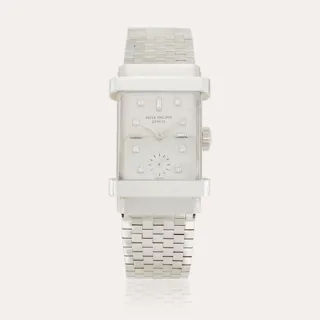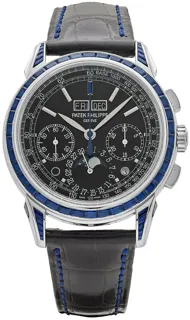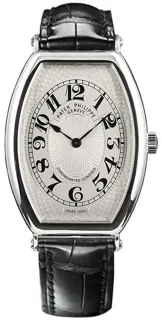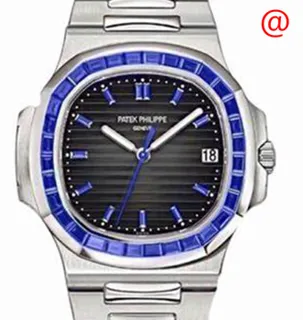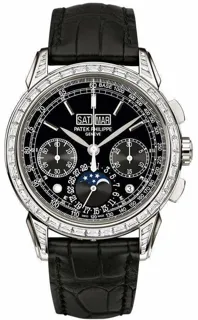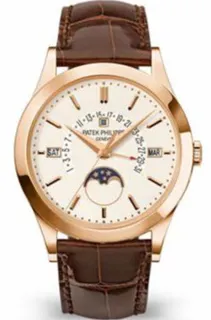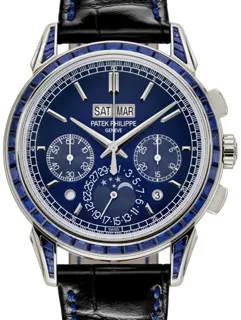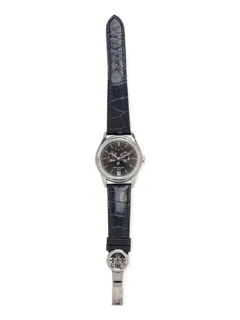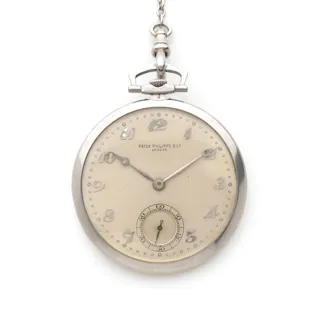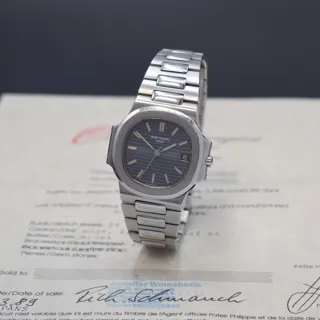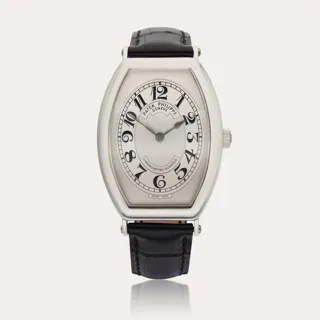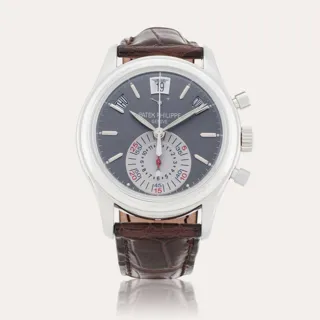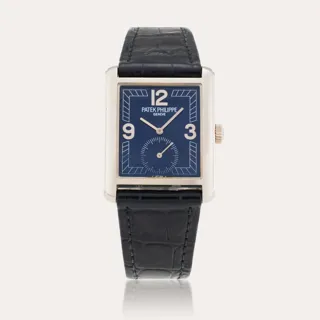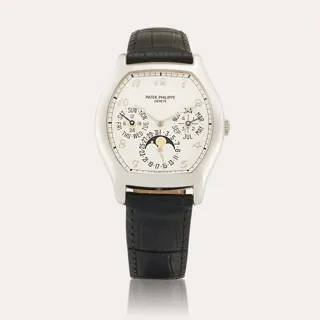Reference 1450 ‘Top Hat’ | A platinum and diamond-set bracelet watch, Circa 1950
Patek Philippe
Dial: silvered, single cut and baguette diamonds-set indices Caliber: cal. 9’’’90 mechanical, jeweled Movement number: 970’296 Case: platinum, snap on case back Case number: 650’731 Closure: platinum Gübelin brick link bracelet with folding clasp Size: 37 x 25 mm, bracelet circumference approximately 180 mm Signed: case, dial, and movement Box: no Papers: no In order to understand the horological industry in the 19th and 20th centuries, we must first dismantle our contemporary understanding of how watches are manufactured today. Presently the emphasis is on wholly in-house manufacture with Patek Philippe and Rolex being the brands most renowned for their in-house production capabilities. However, back in the 19th and 20th centuries, the watches supply chain consisted of a kaleidoscope of specialist craftsmen who focused solely on case or hairspring manufacturing. Patek Philippe was no exception, in fact, it allowed for the possibility of the more innovative designs to be realized and creative manufacturing techniques to be honed. Despite The Great Depression, the 1930s saw a revitalization of Swiss watch making and design with many interesting case shapes that continued into the 1940s and 50s. The Swiss Precious Metal Act of 1933 solidified consumer protection and supply chain control in the watch industry by requiring all jewelers and case makers to file their Poinçons de Maître (maker’s marks) Central Bureau for the Control of Precious Metals in Bern. Genevan Poinçons de Maître were registered as a pictogram of a key. Each number in the key corresponded to a different case maker in the city. One of the case makers behind many of Patek Philippe’s rare and collectible designs from the period was Markowski, represented by Geneva Key No. 8, who along with our present Reference 1450, was responsible for crafting the Reference 3424 Gilbert Albert, and the Reference 2442 Marilyn Monroe. The cases that came out of Markowski’s workshop are noted to have been exceptionally executed in terms of the complexity of the design despite simplicity in form. The Reference 1450, lovingly referred to as the Top Hat by collectors, was first introduced in 1940 and produced until the 1960s. The distinguishing factor of the Reference 1450, are the hooded lugs which resemble a geometric top hat. Interestingly, some Italian collectors refer to the 1450 as ‘Cinesino’ because of the case’s resemblance to a Pagoda. Indeed, one can kind of see the slight resemblance to the Tank Chinoise with both models bearing their iconic hooded lugs. It is known to have been made in yellow, white, and pink gold, and in platinum, with platinum being the rarest case material. About 280 examples of the Reference 1450 were believed to have been made in platinum, out of which about 40 have been identified to have come to market, one being the present example. The design is a symbol of Patek Philippe’s creativity and mid-Century design that tips its hat to geometric art deco aesthetics that preceded it. The present Reference 1450 features an unusual dial that is not only set with round and baguette diamonds, but also has an engraved line running through the center, bisecting the dial. The design of the dial coupled with the dome-shaped crystal creates an almost tented optical illusion as if the dial is purposefully bent. Fitted on a solid platinum brick-link bracelet, by Gübelin this is a Top Hat that certainly demands, and not only commands, a presence.






